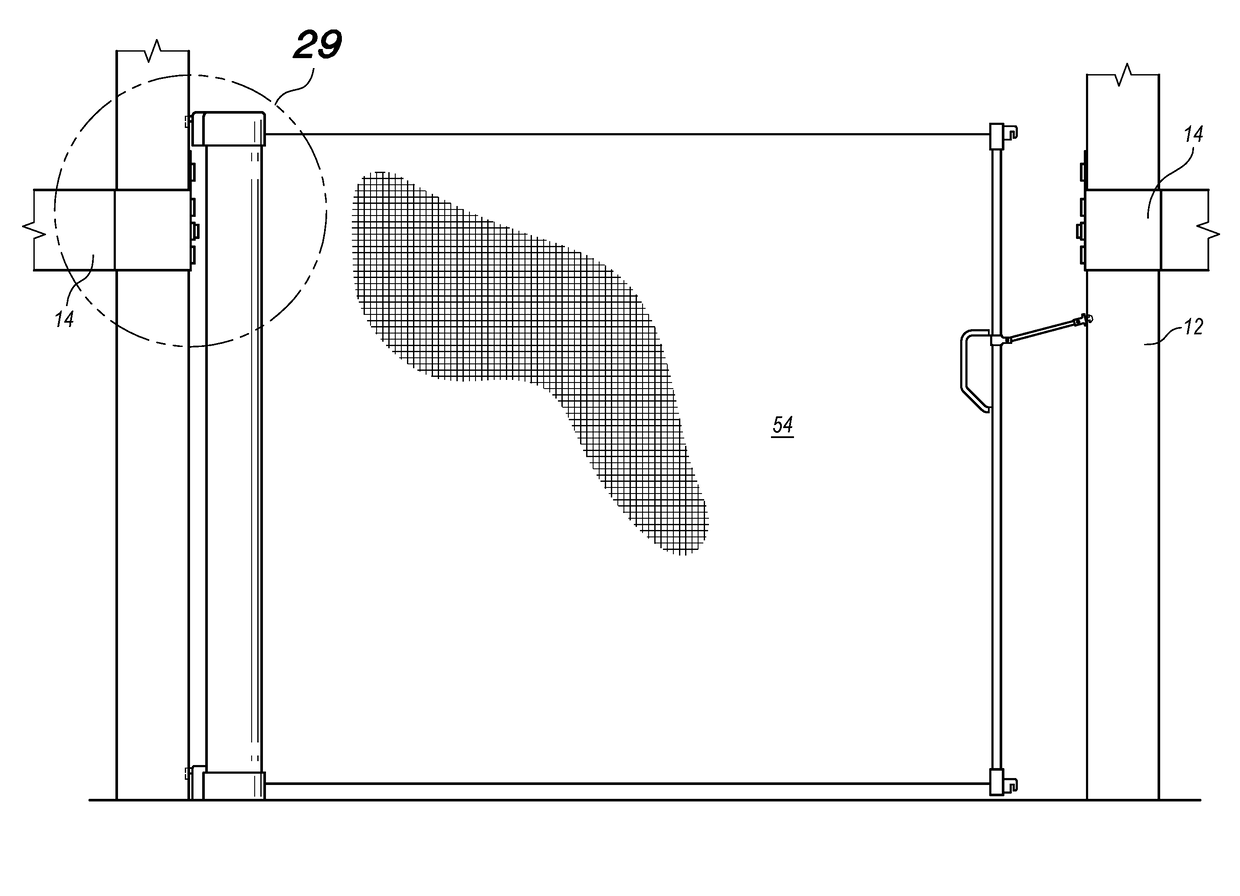Retractable barrier system
a barrier system and retractable technology, applied in the field of retractable gates, can solve the problems of increasing the cost of manufacturing, shipping, maintenance and repair of the same, general unsuitability of residential type compression gates, and increasing the size, weight and complexity of the same, so as to achieve quick and easy installation and removal, and engage and disengage.
- Summary
- Abstract
- Description
- Claims
- Application Information
AI Technical Summary
Benefits of technology
Problems solved by technology
Method used
Image
Examples
Embodiment Construction
[0058]With reference to FIGS. 1-2 of the drawings, there is provided perspective diagrams of an exemplary pallet rack shelving system or assembly 10 suitable, but not required, for use with the present invention. As those skilled in the art will recognize, assembly 10 includes a plurality of support posts 12 for receiving corresponding horizontal connecting lengths (not shown) and vertically spaced horizontal rack beams 14. Each support post 12 generally comprises a single piece of metal having an outwardly faced post section or margin 16, parallel side post sections or margins 18, and an opposed terminal end section or margin 20 defining a substantially square or rectangular post cross section 22.
[0059]As shown more fully in the exploded perspective view of FIG. 2, the outwardly facing post sections 16 and parallel post sections 18 are each typically provided with at least a row of vertically spaced stamped apertures such as keyhole slots 24 and preferably, but not necessarily, two...
PUM
 Login to View More
Login to View More Abstract
Description
Claims
Application Information
 Login to View More
Login to View More - R&D
- Intellectual Property
- Life Sciences
- Materials
- Tech Scout
- Unparalleled Data Quality
- Higher Quality Content
- 60% Fewer Hallucinations
Browse by: Latest US Patents, China's latest patents, Technical Efficacy Thesaurus, Application Domain, Technology Topic, Popular Technical Reports.
© 2025 PatSnap. All rights reserved.Legal|Privacy policy|Modern Slavery Act Transparency Statement|Sitemap|About US| Contact US: help@patsnap.com



